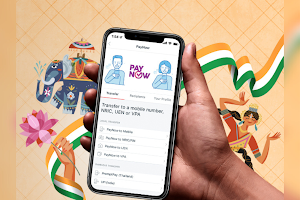To prevent such chaos caused by Coronavirus lockdown, Europe (EU) has deployed its space technology or essentially its Space Programme to strengthen its response during the coronavirus. With more than 30 satellites, the EU's Space Programme - principally through its Earth Observation component Copernicus and its satellite navigation system, Galileo - has been deployed to strengthen Europe's response during the coronavirus.
To prevent chaos on Europe's motorways caused by lockdown, the European Global Navigation Satellite Systems Agency (GSA) and European Commission have developed the 'Galileo Green Lane' app, which provides both drivers and border officials with accurate and real-time information on traffic at the EU's internal border crossings, giving drivers the chance to choose alternative routes, or at the very least have advanced warning of long delays.
[caption id="attachment_145256" align="aligncenter" width="1024"]
 Greenlane App[/caption]
Greenlane App[/caption]Galileo Green Lane app enables borders to meet the ‘Green Lane’ requirements, enabling the flow of traffic under 15 minutes. The app also ease the flow of freight through borders and enable the efficient transit of critical goods.
Galileo, which is EU's Global Satellite Navigation System (GNSS), is sometimes called the ’European GPS‘ and provides accurate positioning and timing information.
Galileo is a programme under civilian control and its data can be used for a broad range of applications. It is autonomous but also interoperable with existing satellite navigation systems. At the moment, the Galileo constellation consists of 26 satellites.
[caption id="attachment_145255" align="aligncenter" width="1017"]
 Galileo Green Lane will help reduce freight bottlenecks at EU borders[/caption]
Galileo Green Lane will help reduce freight bottlenecks at EU borders[/caption]For truck drivers, the app provides a real-time visualisation of borders, through an EU-wide map indicating crossing times. This enables logistic companies and drivers to better prepare their routes, having advance knowledge of the waiting time at each border crossing. In addition, the Member States can notify drivers via the app about the type of cargo that can access the priority lane.
The app also feature a user interface providing drivers with a real-time visualization of borders of interest to them, through an EU-wide map indicating Green Lane border crossing times. When drivers enter a geo-fenced area within a specified distance to a border, they can receive a notification produced by the border officers on the situation at that border.
Notably, a Green Lane is a TEN-T border crossing, where the time taken to cross the border is less than 15 minutes. The TEN-T (Trans-European transport NeTwork) is a network of roads, railways, airports and water infrastructure in the European Union. There are 180 border crossing points in the network.
#EUSpace is w/ the EU citizens everyday by:
📱 fighting the #COVID19 w/ the Galileo #GreenLane app
🚨saving lives w/ @SARGalileo & #eCall
♻️reducing the environmental footprint w/ #EGNOS-enabled #precisionagri
& much more⬇️https://t.co/FIdgEz9155#strongertogether #EuropeDay pic.twitter.com/FOQDg0opdH
— European GNSS Agency (@EU_GNSS) May 9, 2020
The location of drivers is collected anonymously only when they are approaching the border and it is solely used to update the overall border picture. Crowdsourced information from different sources is aggregated, including data from the leading European real-time visibility platform Sixfold.
On other hand, Earth observation data from Copernicus, the EU's Earth Observation Programme for looking at planet Earth and its environment for the benefit of European citizens, has been used to better understand the impact of traffic congestion at borders between EU Member States. Copernicus contributed to helping national authorities make informed decisions on how to ease congestion caused by measures taken that helped reduce the spread of the virus.
With more than 16TB of full, free and open data per day, Copernicus delivers precious information to the scientific community to monitor and evaluate the environmental and economic impacts of the coronavirus outbreak.
Copernicus data combined with analytics tools and artificial intelligence (AI) algorithms are helping to better understand the consequences of the crisis, to mitigate its potential impacts and anticipate new models for the recovery period.
Despite #COVID19, the #Copernicus ecosystem is still providing a wealth of interesting online training opportunities 🥳.
In this week's #CopernicusObserver🛰️🇪🇺, find out about the upcoming @eumetsat online events on the use of Copernicus data.
➡️https://t.co/qdmLVjfQKf pic.twitter.com/KaZPZ10vca
— Copernicus EU (@CopernicusEU) May 7, 2020













 IndianWeb2.com is an independent digital media platform for business, entrepreneurship, science, technology, startups, gadgets and climate change news & reviews.
IndianWeb2.com is an independent digital media platform for business, entrepreneurship, science, technology, startups, gadgets and climate change news & reviews.



